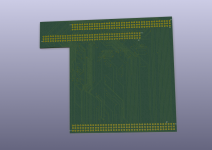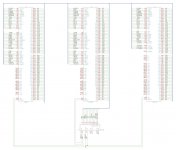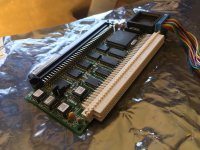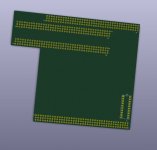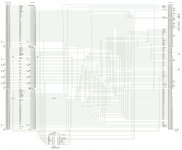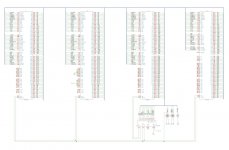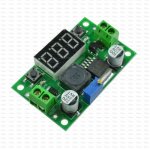Hey all, I just want to come clear with a little information which some of you may not be aware.
Please understand that the work we have completed so far has been a totally collaborative effort, and how we decide to proceed is not just a one man decision. What you don't see is the hundreds of replies across dozens of PMs, and even on multiple forums, between jt and myself discussing and theorizing on ideas on how to clone this adapter, and how to morph it into a form that fits our needs. Keep in mind, before this project, I had never touched digital electronics, or programmable logic. I'm just some lucky schmuk who found a card after years of searching, pulled the chip off, dumped it, and screwed around with a logic analyzer. The work isn't just mine-- jt has been absolutely instrumental in getting me up to speed, explaining his findings over previous attempts, sharing confirmed pinouts, and more. And of course I have previously mentioned Porchy before, and there is no denying his contribution was a huge windfall for the IIsi compatibility.
Now with that said, I did state that all materials will be open. And that is true. All the equations for the PAL, and even the pinout of the card have been posted previously in this thread. And in the coming weeks, the schematic will continue to be posted when I work on it until completion. Anyone competent with CUPL could right now create the fusemap with the equations I have provided. Anyone can see the pinout and create their own board. Right now.
The issue, and we really haven't even decided if it is an issue, is there are some unsavory manufacturers out there. Case in point, BMoW sells the ROM-inator II, which is based on Doug Brown’s original Mac ROM SIMM design. He licensed it, and a proceed of the sales goes back to Doug. But there is a manufacturer using this same design, without permission. This is wrong. We kind of want to avoid that same thing happening, so maybe the compiled fusemap should be protected. I say maybe, because we don't know yet, perhaps we won't even care.
But let me assure you, no one is looking to make money here. The cards will be sold at pretty much cost, maybe a small fee for time spent. I don't even know how much that would be, because we haven't priced anything other than "like new" GALs on eBay. Hell, we don't even know if there is a real demand for these things, other than the dozen or so community members that have posted here. I joined on doing my part simply because I want one for myself, not because I want to make or *shudder* support a product.
So that's all for this morning. Thanks so much for your interest, and hopefully a solution will be here in the next few months that can make everyone happy and at a very reasonable cost.


